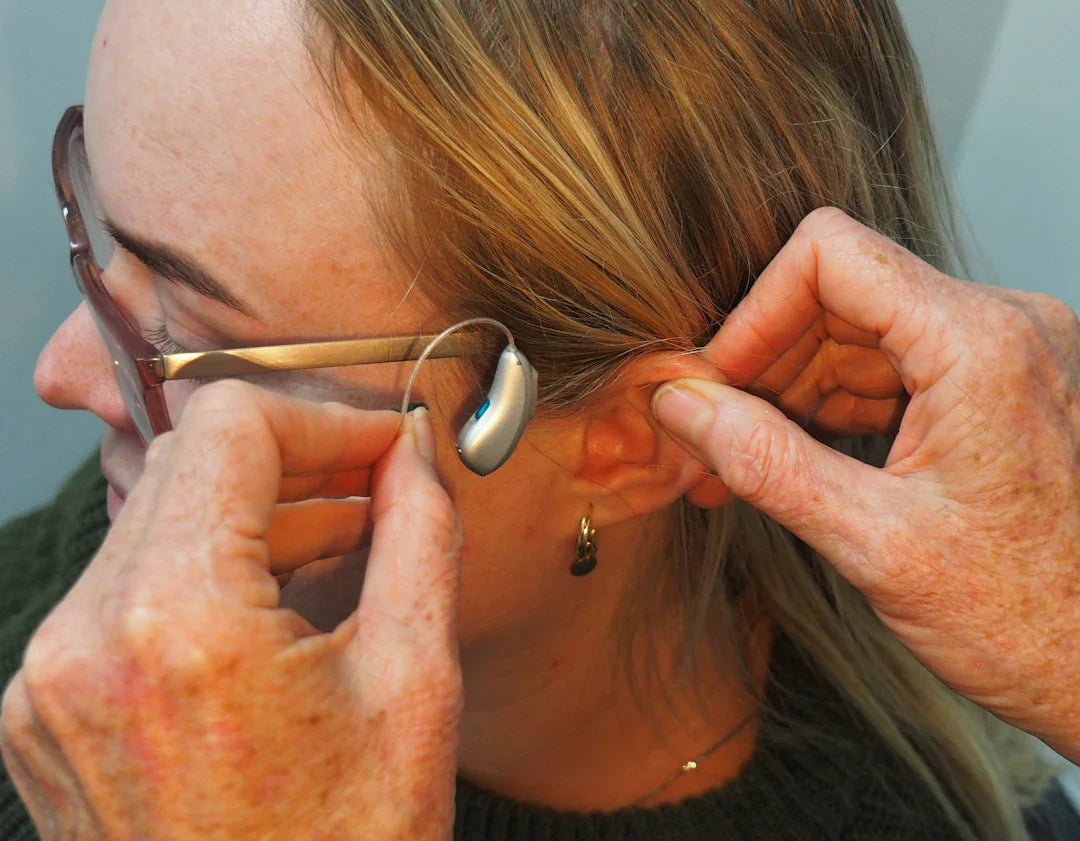Hearing is a vital sense that profoundly impacts a child's development, communication skills, and overall well-being. As a parent, when faced with the challenges of hearing loss in your child, choosing the right hearing aids can feel overwhelming. In this blog post, we will explore the unique considerations surrounding hearing aids for children, and how advanced hearing technology can transform their lives, ensuring they have access to the sounds that matter most.
Understanding Hearing Loss in Children
The journey begins with understanding the nature of hearing loss in children. Hearing loss can vary broadly, ranging from mild to profound. It may be present at birth (congenital) or can develop later (acquired hearing loss) due to various factors, including infections, trauma, or genetic predispositions.
Recognising the Signs
Early detection of hearing loss is crucial. Parents and caregivers play an essential role in recognising the signs. Some indicators of potential hearing loss in children include:
- Not responding to their name being called.
- Difficulty understanding spoken instructions.
- Frequent requests for repetition or clarification.
- Delayed speech development compared to peers.
- Struggles to follow conversations in noisy environments.
If any of these signs resonate with your experience, seeking advice from an audiologist can lead to an effective assessment of your child's hearing capabilities.
The Role of Audiology in Assisting Children
Audiology plays a pivotal role in assessing and managing hearing loss in children. The audiologist will conduct thorough hearing tests to determine the extent and type of hearing loss, and from there, they can recommend appropriate solutions tailored to your child's needs.
Early intervention through audiology is essential. It can significantly enhance a child’s language development, academic performance, and social skills. In addition to providing diagnostic services, audiologists can guide parents on hearing care and the use of hearing aids.
Selecting the Right Hearing Aids
When it comes to choosing hearing aids for children, several unique factors need to be considered. Children are not just small adults; their needs and lifestyle differ significantly. Here’s a guide to help you navigate through the selection process:
1. Customisation for Comfort
Children's ears continue to grow rapidly. Therefore, selecting hearing aids that can be adjusted for comfort and versatility is crucial. Many advanced hearing technologies allow for custom fittings to accommodate the physical changes in a child's ear.
2. Durability and Resilience
Children can be adventurous, and their hearing aids need to be able to withstand the rigours of daily life. Look for options that are robust, water-resistant, and feature protective coatings to safeguard against dirt and moisture exposure.
3. Technology Enhancements
Modern hearing aids offer advanced features that enhance the listening experience, making it easier for children to participate in school and social activities. These technologies include:
- Directional microphones that filter background noise.
- Bluetooth connectivity for streaming audio directly from devices.
- Learning capabilities that adapt to different listening environments.
Utilising these advanced hearing technologies can significantly improve sound clarity and help children transition into their roles in society more smoothly.
Earwax Removal: An Often Overlooked Aspect
Another important consideration in hearing care for children is earwax removal. Regular maintenance is crucial, as excess earwax can lead to discomfort, potential infections, or even blockages, which can disrupt the function of hearing aids. Proper techniques for earwax removal should be followed to ensure a safe and effective process, preferably performed by a trained professional or audiologist.
Creating a Supportive Environment
Once you have selected the right hearing aids, the next step is to create an environment conducive to your child’s listening and learning needs. Here are some strategies to consider:
1. Open Communication
Encourage open dialogue about hearing aids with your child. Help them understand the importance of wearing their aids consistently and how it enhances their ability to hear and communicate effectively. This understanding can promote a sense of ownership and pride in using their hearing aids.
2. Education and Advocacy
Educate teachers and peers about your child’s hearing loss and hearing aids. This advocacy will aid in fostering an inclusive environment in classrooms, mitigating potential misunderstandings, and encouraging supportive friendships.
3. Regular Check-Ups
Regular check-ups with an audiologist are essential to monitor hearing loss progression and to adjust hearing aids as necessary. As a child’s hearing needs evolve, maintaining a proactive approach to hearing care is vital for ensuring that they receive the best auditory experiences possible.
Addressing the Emotional Aspects
Having hearing loss can sometimes affect a child's emotional wellbeing. They may feel different or face challenges in social situations. It is important for parents to remain attentive to their child's feelings and provide emotional support. Engage them in activities that foster interaction and self-esteem, further encouraging them to embrace their hearing aids as a tool for empowerment rather than a limitation.
Empowering Your Child Through Auditory Accessories
Besides hearing aids, there are other auditory accessories that can further enhance your child’s listening experience:
- FM systems: These can be beneficial in noisy environments like classrooms, allowing your child to hear the teacher’s voice directly.
- Loop systems: Often found in public places, these systems provide a direct sound source to hearing aids, enhancing clarity and understanding.
Incorporating such accessories into your child's routine will significantly improve their auditory experiences and make learning and social interactions more enjoyable.
Exploring Resources and Support
The journey of managing hearing loss in children can feel daunting at times. However, numerous resources and support groups are available to guide parents. Connecting with local and national organisations that focus on hearing loss can provide invaluable information, community support, and opportunities for networking with other families experiencing similar challenges.
Your Child Deserves Every Sound
As you navigate the world of hearing aids and audiology for your child, remember that every sound they hear can have a profound impact on their life. By engaging in open communication, staying proactive in hearing care, and embracing advanced hearing technology, you can empower your child to thrive in any environment. From the joyful laughter of playdates to the gentle melodies of music, ensuring your child can enjoy these sounds is a gift that will last a lifetime.
Your child’s journey towards better hearing, understanding, and connection begins here. Embrace this path, and together, let them discover a world filled with sound and opportunity.




